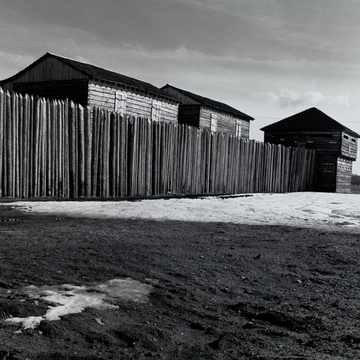This Mississippi River community is the site of the 1808–1813 Fort Madison, the first American fortification built in Iowa. The fort was abandoned near the end of the War of 1812, and only one chimney remained as a monument. In 1908 a replica of this chimney, “The Lone Chimney Monument,” was erected to mark the site of the fort. The fort itself was excavated in 1965, and in 1986 work commenced on rebuilding the entire fort in the city's Riverside Park; much of the construction has been accomplished by prison inmates from the State Penitentiary.
The first settlement at Fort Madison took place in 1832, and it was incorporated by an act of Congress in 1836. 25 An unusual feature of its north-south, east-west grid was the inclusion of three public squares between E and F streets, the center one designated as the site for a courthouse. The town's earliest industry consisted of lumber and planing mills, supplemented by extensive river trade. In the late 1870s and 1880s, the railroad and a bridge across the Mississippi added to the economic base of the city. Other industries developed in the twentieth century; certainly one of the most widely known is the W. A. Sheaffer Pen Company, started in 1913. Another “industry” of the community is the Iowa State Penitentiary (the first section was erected during 1838–1841).
Although both the railroad and the highway (US 61) intervene between the river and the city, the development of the ten-block-long Riverside Park ties the city to the riverbank in an effective manner. A museum center—the former railroad passenger station—and the reconstruction of Fort Madison fit in well with the public openness of the park area.
Notes
Fred Sloat, Fort Madison: A Pictorial History.

